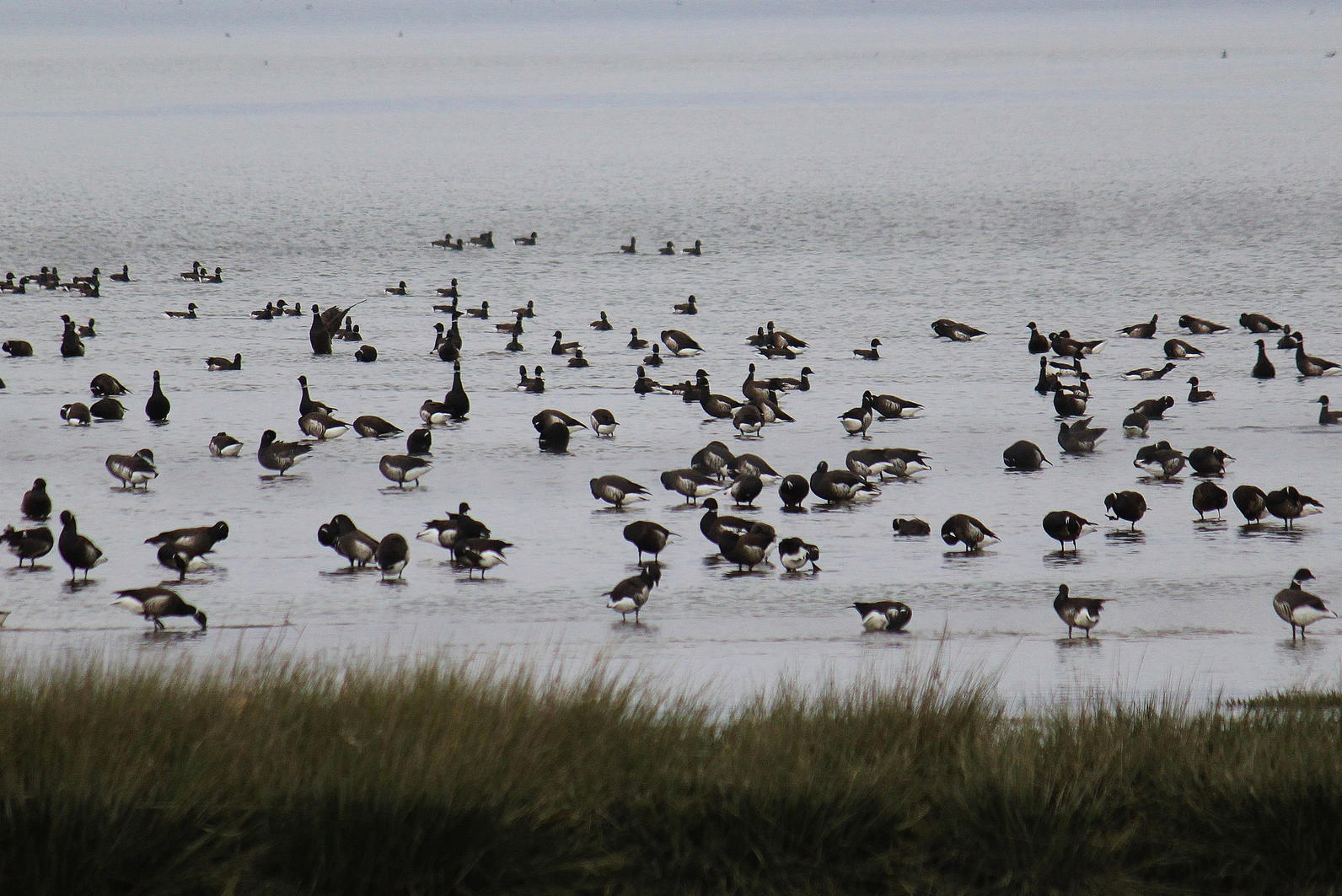
Audubon Magazine takes a close look at the reasons behind our lawsuit to save bird habitat in Humboldt Bay. Lots of good biological information here:
"Located 260 miles north of San Francisco, the area is the second-largest estuary on the West Coast and one of the state’s most productive bodies of water—its tides act like lungs, constantly draining, refilling, and replenishing nutrients. Among the various habitats supported by this ebb and flow are half of California’s remaining eelgrass beds, a vital food source and habitat for herring as well as migrating birds.
"This combination of size, biodiversity, and increasingly rare habitat is what makes Humboldt an essential stopover site for about 50 species of birds on their seasonal flights between Mexico and northern breeding grounds. Nearly half the Dunlins and 23 percent of all Western Sandpipers pass through every year.
"Meanwhile, Pacific Black Brants wheeling in from Baja, California, land feet first in the shallow waters of the northern part of the bay, the biggest contiguous bed of intertidal eelgrass between Mexico and Washington state. Up to 60 percent of Brants break up their seasonal journey to Alaska at Humboldt, where eelgrass is the mainstay of their highly specialized diet."
Monthly Giving
Our monthly giving program offers the peace of mind that you’re doing your part every day.




